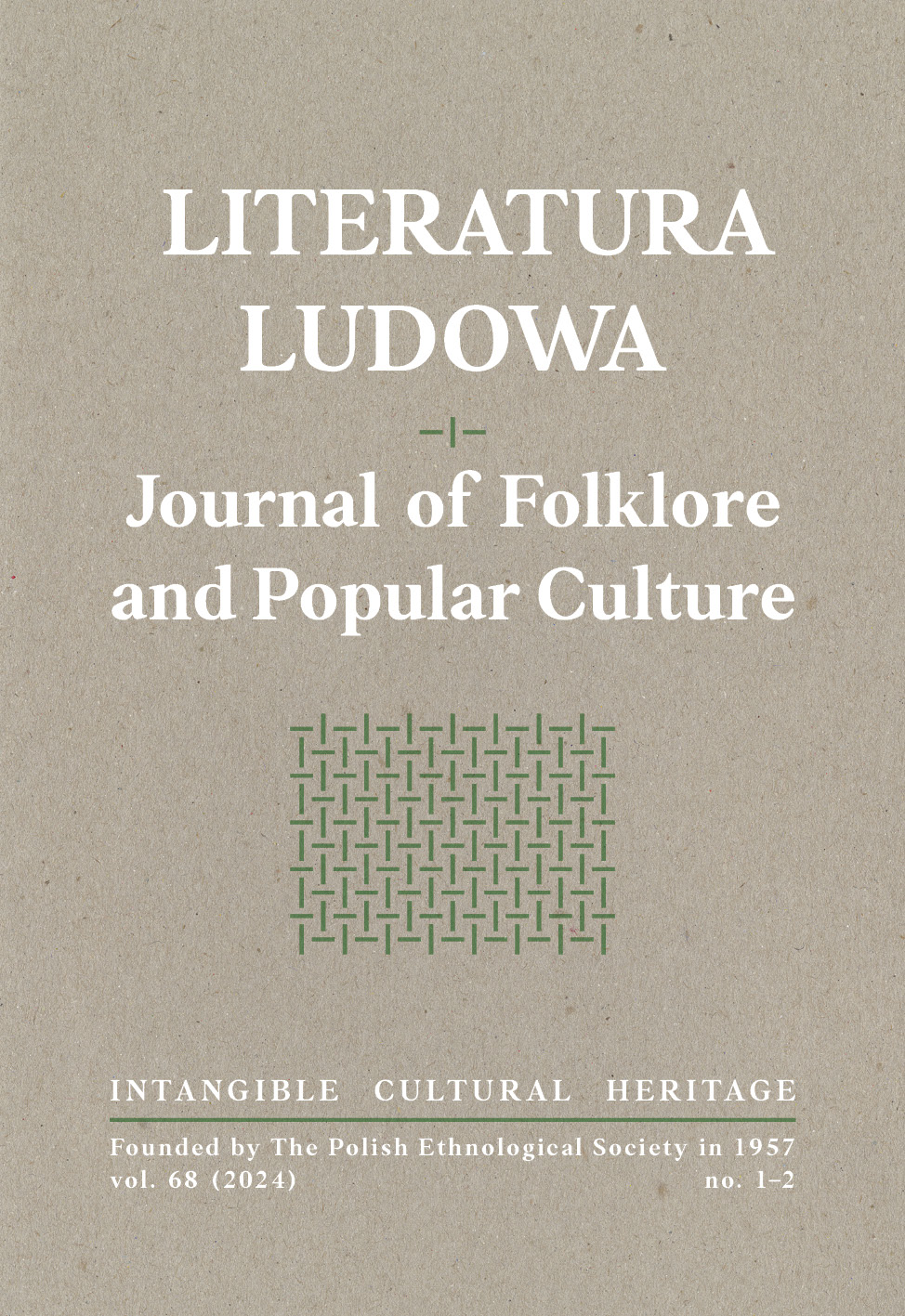What Is Visible and What Is Invisible during the Carnival at Rajecká Dolina (Rajecká Valley), or Sekala & Niskala in Slovakia
DOI:
https://doi.org/10.12775/LL.1.2024.003Klíčová slova
carnival, visible/invisible ritual, local community, symbol, tourismAbstrakt
Fred B. Eiseman Jr.’s publication which discusses “the visible and invisible” meanings of traditional culture on the Indonesian island of Bali inspired the content of this study. I have asked the following research question: How can an inscription in the national list of intangible cultural heritage influence Carnival (Fašiangy) traditions at Rajecká Dolina (Rajecká Valley)? The description of Carnival customs in the Municipality of Rajecká Lesná illustrates that a part of them is intended for the public and another part for a closer group of participants – municipality inhabitants who understand ritual behaviour and humorous comments and remember what they have experienced together. The third part remains visible only to Carnival revellers and their friends. In the system registration of elements of cultural heritage on the UNESCO list it is very important that balanced focus should be given to understanding the singularity and the degree of effectiveness of each element stemming from folk traditions, which fulfil important tasks mainly at the regional level.
Reference
Akagawa, N., Smith, L. (2019). The practices and politics of safeguarding. In N. Akagawa, L. Smith (eds.), Safeguarding Intangible Heritage Practices and Politic (pp. 4–25). Routledge.
Blake, J. (2020). Participation in Safeguarding Intangible Cultural Heritage Viewed as a Human Rights. Volkskunde, 121(3), 315–337.
Bachtin, M. M. (1975). François Rabelais a lidová kultura středověku a renesance (transl. J. Kolář). Odeon.
Centrum pre tradičnú ľudovú kultúru (n.d.). Representative list of the intangible cultural heritage of Slovakia. https://www.ludovakultura.sk/zoznamy-nkd-slovenska/reprezentativny-zoznam-nehmotneho-kulturneho-dedicstva-slovenska/prvky-zapisane-v-reprezentativnom-zozname-nkd-slovenska/
Conti, A. L., Cravero-Igarza, S. (2010). Patrimonio, comunidad local y turismo. Notas en turismo y economía, 1, 8–31.
Eiseman jr., F. B. (2009). Bali: Sekala & Niskala. Essays on Religion, Ritual, and Art. Tuttle Publishing.
Dreher, T. (2001). Performance Art nach 1945. Aktionstheater und Intermedia. Wilhelm Fink Verlag.
Marcinová, J. (2023). Premeny vizuálnej podoby fašiangových obchôdzok vo vybraných obciach Rajeckej doliny v rokoch 1980–2020. In M. Jágerová (ed.), Fašiangy na Slovensku vo vidieckom prostredí – kontexty minulé a súčasné. Zborník textových a vizuálnych materiálov [PDF, work in progress]. Oddelenie etnológie, Ústav manažmentu kultúry a turizmu, kulturológie a etnológie FF UKF v Nitre.
Lužica, R. (1998). Štyri pohľady na fašiangy v Rajeckej doline. In D. Luther (ed.), Masky v ľudovej kultúre. Zborník k Antológii východoslovenského folklóru (pp. 58–61). Národné osvetové centrum.
Munková, E. et al. (1991). Čičmany. Osveta.
Obec Rajecká Lesná (2023, February 24). Fašiangy 2023 v Rajeckej Lesnej. https://www.rajeckalesna.info/pages/fasiangy-2023-v-rajeckej-lesnej
Slivka, M. (1990). Ľudové masky. Tatran.
Stavělová, D. (2013). Jízda králů ve Vlčnově – průběh a hlavní témata události. Národopisná revue, 23(1), 3–14.
Stavělová, D. (2015). The Ride of the Kings in Vlčnov from the Perspective of Contemporary Research (Daniela Stavělová). Národopisná revue, 25(5), 47–64.
ThrowBack Graphics (2023, March 19). Fašiangy’23 Rajecká Lesná [video]. Youtube. https://www.youtube.com/watch?v=KMYwXCBBIyE
Turzová, M. (1970). Fašiangy v Rajeckej doline. Zborník slovenského národného múzea. Etnografia, 64(11), 153–174.
ČTK (2021, November 26). Zápis Jízdy králů na seznam UNESCO zavazuje pořadatele k větší zodpovědnosti. https://www.barrandov.tv/rubriky/spolecnost/kultura/zapis-jizdy-kralu-naseznam-unesco-zavazuje-poradatele-k-vetsi-zodpovednosti_18912.html
Zmrhalová, K. (2018). Aktuálna podoba fašiangových obchôdzok v obci Ďurčiná [bachelor thesis]. Katedra etnológie a folkloristiky FF UKF, Nitra.
Stahování
Publikováno
Jak citovat
Číslo
Sekce
Licence
Copyright (c) 2024 Zuzana Beňušková

Tato práce je licencována pod Mezinárodní licencí Creative Commons Attribution-NoDerivatives 4.0.
1. The authors give the publisher (Polish Ethnological Society) non-exclusive license to use the work in the following fields:a) recording of a Work / subject of a related copyright;
b) reproduction (multiplication) Work / subject of a related copyright in print and digital technique (ebook, audiobook);
c) marketing of units of reproduced Work / subject of a related copyright;
d) introduction of Work / object of related copyright to computer memory;
e) dissemination of the work in an electronic version in the formula of open access under the Creative Commons license (CC BY - ND 3.0).
2. The authors give the publisher the license free of charge.
3. The use of the work by publisher in the above mentioned aspects is not limited in time, quantitatively nor territorially.
Stats
Number of views and downloads: 276
Number of citations: 0



